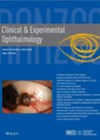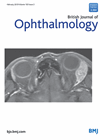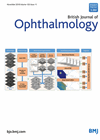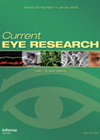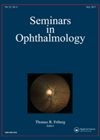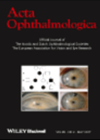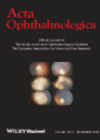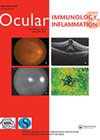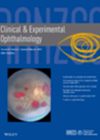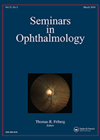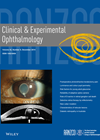
Journal Reviews
Ocular manifestation of Marfan Syndrome
This repeated cross-sectional study collected data in 2003-2004 and 2014-2015 to investigate changes in ocular features in Marfan syndrome (MFS) fulfilling the Ghent-2 criteria. Ghent-2 is a set of criteria by which MFS are identified and includes aortic root aneurysm...
Temporal versus nasal clear corneal incisions
This is a prospective randomised study of 100 patients’ left eye having undergone phacoemulsification either by a 2.4mm nasal clear corneal incision (CCI) group or temporal CCI group. The corneal astigmatic changes were compared between groups by power vector analysis,...
Corneal suture sample evaluation
This is a prospective study of 35 patients’ suture samples taken from a tertiary cornea clinic, Miami, Florida, with a history of penetrating keratoplasty. The aim is to study the relationship between corneal suture bacteriology, biofilm and the clinical setting,...
Differences in elastometry of cornea and optic nerve head in both eyes of patients with NAION
Non-arteritic anterior ischaemic optic neuropathy (NAION) is an important cause of visual loss in the middle aged and elderly population. This prospective cross-sectional study investigates the biomechanical properties of optic nerve head (ONH) and cornea in both eyes of patients...
Effect of refractive corneal surgery on IOP and glaucoma progression
Accuracy of intraocular pressure (IOP) measurement depends on the biomechanical properties of the cornea, including its thickness central corneal thickness (CCT) and keratometry (K). Fifty-six eyes of 56 patients with primary open angle glaucoma (POAG) who had a history of...
Biomechanical stabilisation of ocular measurements post cataract surgery
This prospective study looks into the time duration of biomechanical stabilisation post uneventful cataract surgery in a case series of 62 consecutive eyes in patients with no ocular or systemic comorbidity. The patients were followed-up at fixed intervals of one...
What about the children? Cornea cross-linking for children with keratoconus
Keratoconus can behave more aggressively in paediatric than in adult patients. Collagen cross-linking has been shown to slow the progression of keratoconus in adults. This systematic review determined the effectiveness of corneal collagen cross-linking (CXL) in children. For this study,...
Does cornea cross-linkage reduce the rate of corneal transplants in keratoconus?
Cornea cross-linking (CXL) is a relatively new treatment in the management of keratoconus, which may help prevent the need for corneal transplant. This paper investigates if the introduction of corneal cross-linkage has reduced the number of corneal transplants performed annually...
Bandage contact lens cultures after corneal collagen cross-linking
Corneal collagen cross-linking (CCL) is a treatment modality that has been shown to stop the progression of keratoconus. There have also been reports that CCL acts as an antimicrobiologic agent in treating resistant microbial keratitis. This study aimed to investigate...
Conventional vs. accelerated cross-linking
The Dresden protocol of 3mW/cm2 irradiance for 30 minutes has been extensively studied and has shown advantageous clinical and topographical results. However, this protocol is time-consuming and therefore accelerated CXL using higher irradiance to shorten treatment duration has emerged. The...
Comparison of methods of central corneal thickness measurement in glaucoma
This prospective study was done to compare the accuracy and reproducibility of central corneal thickness measured by hand-held and disc-mounted ultrasound pachymeter in glaucoma patients. Sixty-five patients were included in the study. Patients with corneal diseases, corneal astigmatism >3 diopters...
Effect of topical diclofenac on postoperative PRK pain: RCT
A major disadvantage of excimer laser photorefractive keratectomy (PRK) is pain and discomfort after the surgery, which is thought to be due to damage to corneal sensory nerve fibres or local release of inflammatory substances. Pain only resolves once corneal...

